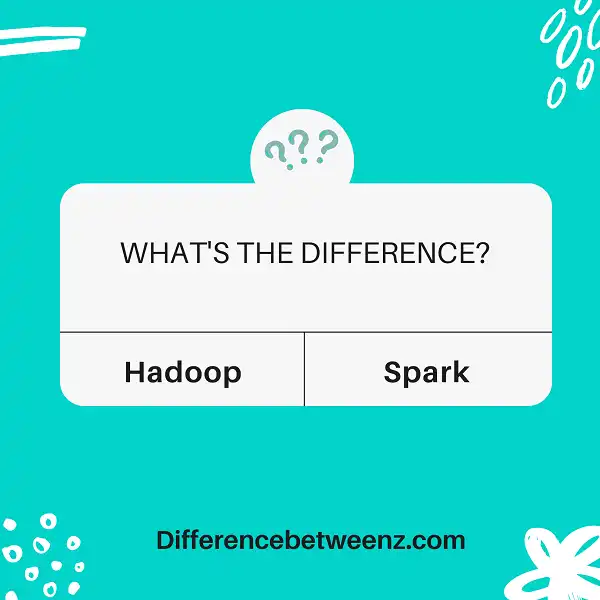Do you want to learn more about the impact that Big Data technologies are having on businesses around the globe? Do you know what Hadoop and Spark are and how they help data scientists handle Massive datasets? In this blog post, we’ll explain the differences between these two frameworks, so you can decide which one is best for your business. We’ll compare their features, scalability capabilities, performance, and other elements that might influence your decision-making process. Read on to find out if Hadoop or Spark should be adopted by your organization!
What is Hadoop?
Apache Hadoop is an open-source software platform for distributed storage and distributed processing of large data sets across clusters of computers, using a simple programming model.
- Hadoop offers two primary components: the Hadoop Distributed File System (HDFS), which distributes large tasks across a number of nodes and crunches enormous amounts of data; and MapReduce, a parallel programming system that automates the process of sorting and processing data.
- Hadoop can scale up quickly to handle petabytes of data, making it an ideal choice for analyzing large amounts of structured, unstructured, sensor-generated, transactional, and real-time data.
- With Hadoop having become increasingly popular in recent years, many organizations are finding value in using Hadoop’s powerful software platforms to store and manage their vast datasets as well as run analytics on them.
What is Spark?
- Spark is an open-source big data processing engine, designed for fast and efficient cluster computing. Spark is a popular choice for data scientists, researchers, and engineers dealing with very large datasets.
- park comes equipped with powerful tools to support data cleaning, transformation, aggregation, functions, and machine learning algorithms. Spark’s architecture allows it to process even the largest datasets in a rapid fashion by running across multiple clusters, thanks to its in-memory primitives and ability to use horizontally scalable clusters of computers.
- Spark also supports SQL queries as well as streaming analytics and graph processing APIs, providing immense flexibility to developers looking to analyze complex datasets faster than ever before.
Difference between Hadoop and Spark
Hadoop and Spark are two of the most popular data processing technologies.
- While Hadoop is a framework featuring distributed file storage and processing, Spark is an online analytic processing engine that runs on Hadoop.
- Hadoop provides storage and processing capabilities while Spark is a tool designed to process larger volumes of data. Hadoop works best with batch applications, while Spark is more appropriate for real-time applications such as analytics, machine learning, streaming, and graph processing.
- Hadoop enables companies to store vast amounts of structured or unstructured data, but it does not offer the fast query times needed for complex analytics tasks; this is where Spark comes in – by providing rapid analytics computation in memory as well as increasing performance with good caching methods.
There are advantages and uses for each technology; businesses need to choose which one best fits their tech stack requirements.
Conclusion
In the end, both Hadoop and Spark are powerful big data processing engines. The best one to use will depend on your specific needs and use cases. If you need a system that is highly scalable and can process batch jobs quickly, then Hadoop is a good choice. If you need a system that can provide near-real-time results or process streaming data, then Spark is the better option. Whichever engine you choose, be sure to do your research so that you can get the most out of it.


